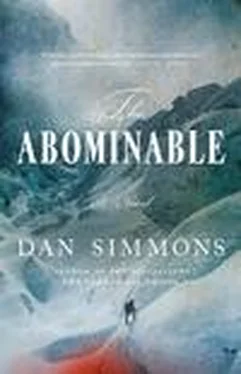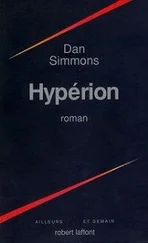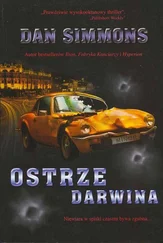“Try it on, both of you,” said the Deacon. “Please.”
J.C. propped the apparatus up on the bench and easily slid into the straps. He hoisted it higher and secured a cross-strap over his chest. “Not too bad,” he said. “I often climb with more weight in a rucksack. But I think you may be right about the balance issue…” Then Jean-Claude surprised me by setting a foot on the bench’s stool and using just his arms to lift himself and the apparatus up to a kneeling position on the sturdy workbench. He set his hands on the wall to help himself get to his feet.
Looming above us, J.C. said, “Yes, climbing sheer rock or ice would be trickier with this.” Then he jumped four feet to the floor as if he weren’t carrying thirty-two pounds of steel and pressurized oxygen on his back.
When it was my turn, I loosened the straps for my greater size and girth, tugged them tight again, took a few steps around the workshop and grunted noncommittally. With J.C.’s help, I shrugged out of the pack and lowered it gently to the bench. I wasn’t sure whether such weight would hinder my climbing or not, but although I’d never say it out loud, I relied on my greater strength and fewer years to allow me to perform physical feats that might be beyond the 37-year-old Deacon and the much smaller and lighter Jean-Claude.
“Then there are the sad tales of the multiple face masks,” said George Ingle Finch. He’d pulled three across the bench toward him. “This first thing was called the Economizer. It was designed to deal with the fact that at Mount Everest altitude, with the lower pressure, most of the oxygen you breathe in while struggling uphill is just breathed out again—without your body or red blood cells getting any benefit from it. So the Economizer here had two valves…”
Finch turned the mask around and tapped the complicated interior. “They were there to allow carbon dioxide to pass through the mask but to store the unused oxygen for reuse. But the damned valves froze up more often than not, making the whole mask useless.”
He held up a second, even heavier-looking face mask. “We tried to solve that problem with this backup mask—the Standard—made of pliable copper with chamois leather over it. The idea was that it could be bent easily to fit each climber’s face. And there were no valves, you see…” He tapped the empty interior. “You controlled breathing and re-breathing by biting on the end of the supply tube. Simplicity itself.”
“Mallory hated that mask,” said the Deacon.
Finch smiled. “Indeed he did. As much as he hated the emergency backup plan I taught everyone, which was simply ripping off the mask and sucking on the oxygen hose directly, as Royal Air Force pilots often do during their brief flights above ten thousand feet. And he hated both the mask and the bare tube for the same reason—the climber drools like a baby. Then the drool freezes. Or runs down your throat and collar and then freezes.”
“So what’s the third mask?” I ask, pointing.
“This was my answer to the Standard’s drooling problem,” said Finch. “T-shaped glass tubes, like small mouth bits, instead of rubber hoses. They minimized drool and worked far better for re-breathing the oxygen your body has just exhaled without using. There was one problem, though, as Geoffrey Bruce discovered during his, Richard’s, and my high-altitude-record ascent toward the North East Ridge in nineteen twenty-two…”
“They break,” said Jean-Claude.
“Indeed.” Finch sighed. “The glass becomes brittle in the extreme cold and can break…or clog…either way shutting off all oxygen to the climber. Before the ’twenty-one and ’twenty-two expeditions, a lot of atmospheric scientists thought that with a climber using bottled air pressurized to fifteen thousand feet, if that O-two flow suddenly stopped at altitude—say, at twenty-seven thousand three hundred feet, where Bruce, Richard, and I were when Bruce’s valve broke—the climber would die immediately.”
“But no one died from such a failure,” said Jean-Claude, obviously aware of the oxygen rigs’ history in the Himalayas.
“Not at all. At least two of our climbers and three porters climbed all the way to our Camp Five at twenty-five thousand feet on the East Ridge with oxygen rigs that weren’t working at all. But Bruce’s valve failure that day, as Richard and I discussed earlier, did cause all three of us to turn back before we reached the North East Ridge.”
“So this version of the pack with the glass valves in the mask is what we’ll be using on Everest?” I asked, looking first at the Deacon and then at Finch.
“No,” said both men at once.
Finch dragged a third Bergen pack frame from the pile of rigs propped against the back of the bench. This one looked different somehow.
“This is Sandy Irvine’s so-called Mark Five version,” said Finch, tapping the steel canisters. “You can see the difference.”
It looked different to me but I was damned if I could see exactly how…wait, there were three oxygen tanks in the frame rather than four, I realized. I smiled at how perceptive I was.
“Almost everything is different,” said Jean-Claude, again running his hands across frame and tanks and dials and tubes. “To start with, I can see that Irvine inverted the tanks so that their valves are at the bottom rather than on top…”
Well, I’ll be damned, I thought. So he had.
“Irvine got rid of almost all the pipe work,” continued Jean-Claude, “and radically simplified this flow meter, setting it right at the lower center of the pack so the rig’s balance would be better.”
Without asking permission, J.C. tugged the Sandy Irvine version of the oxygen rig onto his back. “The hose goes over the shoulder now, rather than under the arm and through all those valves and tubes that used to be hanging in the front. Those are gone. The air feed should be better and the climbing should be easier. And it feels lighter.”
“Yes,” said Finch, nodding. “The late Mr. Irvine’s Mark Five version is almost five full pounds lighter than its predecessors, while working much better and being infinitely less awkward.”
Well, I’ll be damned, I thought again.
“Mr. Irvine did most of this redesign while he was still at Oxford,” continued Finch. “He sent all the modification plans to the company manufacturing them—our proud Siebe Gorman—and in almost a year, they made none of the changes he had requested.”
“None?” I repeated.
“None,” said Finch. “They ignored his and the Everest Committee’s orders to make such modifications and shipped precisely the same clumsy, leaking, bulky kits that Richard, Mallory, Bruce, and I had used in nineteen twenty-two. My good friend Noel Odell, who was the last person to see Mallory and Irvine climbing high, told me that when the expedition’s ninety cylinders arrived in Calcutta, fifteen were empty and twenty-four had already leaked so badly that they were useless on the climb. Mr. Irvine told Odell that he, Sandy, had broken one kit just by carefully removing it from its packing case. It was the same thing I found when we reached Base Camp at Mount Everest in ’twenty-two—not one of the ten apparatuses shipped was usable. The soldered joints all leaked, washers had become so dry during the high-desert trip in to the mountain that joints could no longer be made gas-tight, and the majority of the gauges didn’t work. Some of it was fixable—and I fixed what I could—but essentially, the judgment on the Siebe Gorman apparatus is that they were all…junk.”
Jean-Claude removed the Irvine Mark V version and set it on the workbench with a resounding thump. “Then how did Sandy Irvine get this improved version?”
Finch showed his small smile. “He fiddled with it all during the three-hundred-and-fifty-mile march in, then at Base Camp, then at the higher camps, and didn’t quit fiddling and improving it—with the few tools and parts he had—until the morning he and Mallory left Camp Six and disappeared.”
Читать дальше












